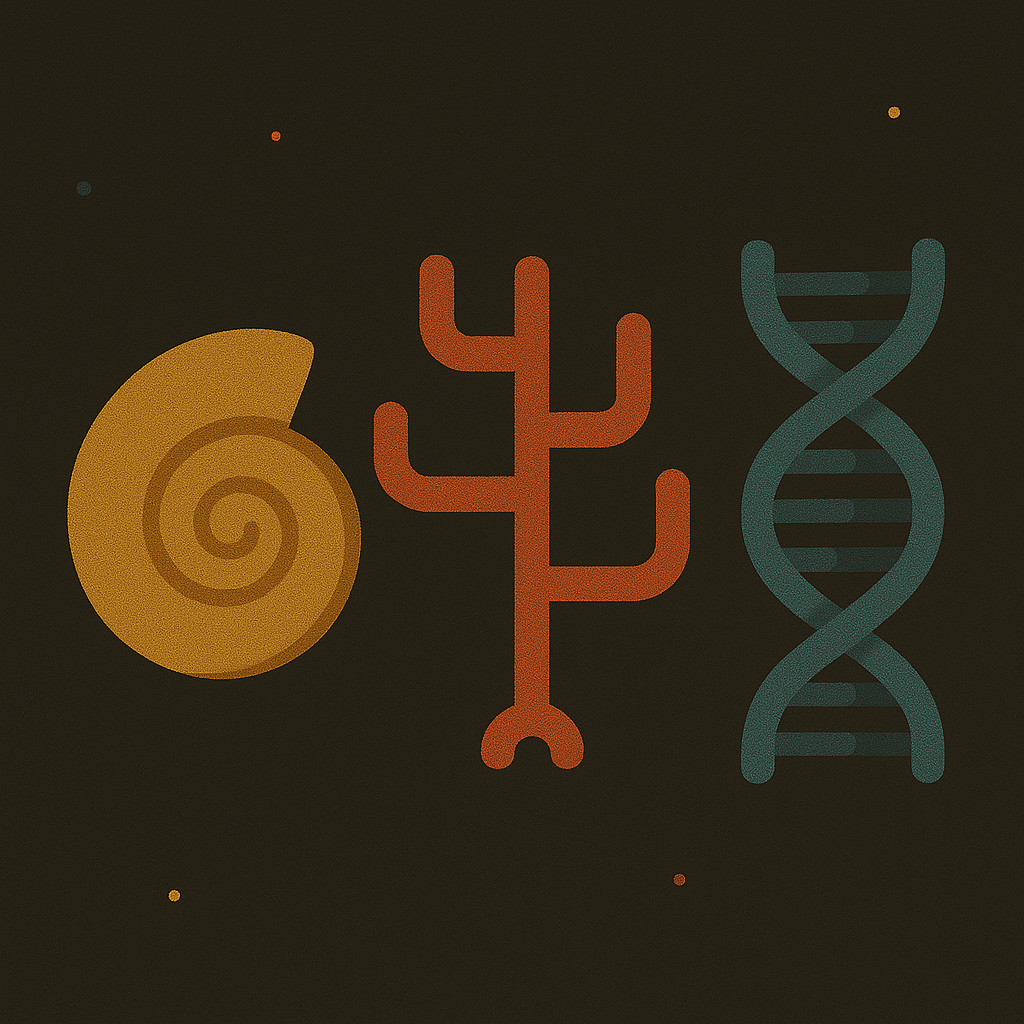Rucete ✏ Campbell Biology In a Nutshell
Unit 5 THE EVOLUTIONARY HISTORY OF BIOLOGICAL DIVERSITY — Concept 26.2 Phylogenies Are Inferred from Morphological and Molecular Data
To construct accurate phylogenies—evolutionary trees—biologists analyze similarities in physical structure and DNA sequences. Distinguishing between shared ancestry (homology) and unrelated similarity (analogy) is essential to reconstructing reliable evolutionary relationships.
Morphological and Molecular Homologies
- Homology: Similarity due to shared ancestry.
- Example: The bone structure in mammalian forelimbs is a morphological homology.
- At the DNA level, molecular homologies are found when gene sequences are inherited from a common ancestor.
- Organisms with similar morphologies or genetic sequences are generally closely related.
- However, appearances can be deceptive. For example, Hawaiian silversword plants differ morphologically but are genetically very similar.
Sorting Homology from Analogy
- Analogy results from convergent evolution, where similar traits evolve independently in unrelated lineages due to similar environmental pressures.
- Example: The African golden mole and Australian marsupial mole look similar but are evolutionarily distant.
- The complexity of traits helps distinguish homology from analogy:
- Highly detailed similarities in structure or genetic sequences are more likely to be homologous.
Evaluating Molecular Homologies
- Molecular comparisons can be difficult when species are distantly related:
- Their DNA sequences may differ significantly due to many insertions, deletions, and mutations.
- To resolve this:
- Scientists use alignment programs that adjust sequences by adding gaps to identify homologous regions.
- Accurate alignments are essential to avoid mistaking coincidental matches for true homology.
Key Takeaways on Phylogenetic Inference
- Homologous traits—not analogous ones—should be used to infer phylogenies.
- Morphological data is useful, but molecular data provides finer resolution, especially for distantly related or morphologically similar species.
- Statistical tools help detect deep homologies in divergent gene sequences.
- Accurate phylogenies depend on distinguishing shared ancestry from convergence.
In a Nutshell
Phylogenies are constructed using data from morphology and DNA. The key is recognizing homologies, which reflect common ancestry, and avoiding analogies, which result from convergence. Molecular tools and sequence alignment methods are crucial in deciphering evolutionary relationships, especially among distantly related organisms.

